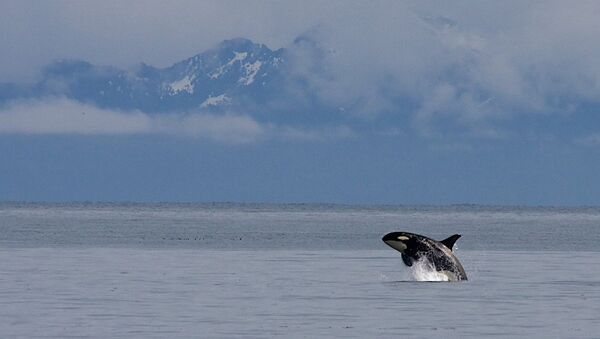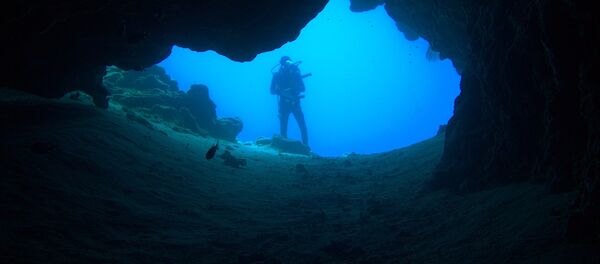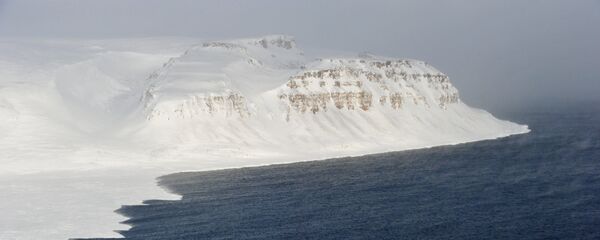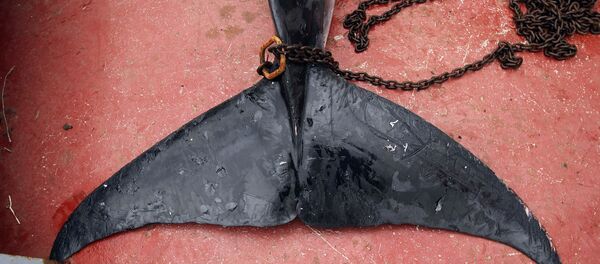Polychlorinated biphenyls (PCBs) were banned in 1978, but a study published in Science on Thursday found that the toxic chemicals are still leaking into the oceans from landfills and waste, bioaccumulating up the marine food chain. The result is that PCB concentrations in orcas, also called "killer whales," can be 100 times safe levels, damaging reproductive organs and the animals' immune systems, and causing ailments such as cancer. The cetaceans can also pass the toxins on to their calves through contaminated milk, The Guardian noted.
"We know that PCBs deform the reproductive organs of animals such as polar bears," professor Rune Dietz from the Department of Bioscience and Arctic Research Center, Aarhus University, co-author of the article, told Science Daily. "It was therefore only natural to examine the impact of PCBs on the scarce populations of killer whales around the world."
The researchers combed through existing literature on the subject and added their own, creating the largest killer whale study ever done, providing information on more than 350 whales. The scientists then predicted what the effects would be on orca offspring over successive generations for another century, and concluded that over half of the world's orca populations are under threat.
"Populations of Japan, Brazil, Northeast Pacific, Strait of Gibraltar and the United Kingdom are all tending toward complete collapse," they concluded.
"It is like a killer whale apocalypse," Paul Jepson at the Zoological Society of London, part of the international research team, told The Guardian. "Even in a pristine condition they are very slow to reproduce," averaging 18 months for calf gestations plus another 20 years to reach peak sexual maturity.
"The only thing that gives me hope about killer whales in the longer term is, yes, we are going to lose populations all over the industrialized areas, but there are populations that are doing reasonably well in the Arctic," Jepson told The Guardian.
PCBs are an organic chlorine compound that were once widely used in the manufacturing of electronics and plastics beginning in the 1930s. However, as news about their incredible toxicity spread, countries began to ban them. The US banned their use in 1978, and by 2001 the Stockholm Convention on Persistent Organic Pollutants, an international treaty, banned them entirely, with 152 countries signing on to phase them out by 2025 and clean up existing waste, CNN reported.
Sputnik spoke with Shari Tarantino, president of the board of directors of the Orca Conservancy, a Seattle-based nonprofit working to protect the three pods of Southern Resident killer whales that live in Washington State and British Columbia's Puget Sound, Salish Sea and Strait of Georgia, about the study. She had a few bones to pick with the researchers' methods and conclusions.
"It appears this study took samples from 19 groups/populations of killer whales, and eight were predicted to collapse due to PCBs," she noted. "Essentially, that means their samples did not cover all populations. There are at least 11 more populations that were not included, some of which may include nearly half of all the world's killer whales (Antarctic types A, B, and D). Also, eight out of 19 isn't even half of their small sample, so it's not accurate to claim ‘half of the world's killer whales could disappear' even if we stick with that sample size."
Noting that the study only included a single representative from the Hawaii and Brazil orca populations, Tarantino questioned whether such drastic conclusions as total collapse could be predicted based on such small samples.
Tarantino faulted the scientists' extrapolation of PCB effects on orcas from studies done on other mammals such as seals and mink. "Unfortunately we don't know how individual killer whales respond to PCB concentrations," she said, noting, "We just can't ethically study killer whales in a lab setting involving toxic chemicals, and even in lab settings there are so many confounding factors to control for, such as sex, age, health status, other contaminants, etc."
"Lastly, PCBs are fat soluble, which means they are bound to the blubber, and it's suspected that PCBs become a problem when a whale begins to metabolize that blubber and release the PCBs into circulation. That may explain why the Southern Residents are struggling to successfully reproduce, while the transients, even with higher PCB concentrations, are incredibly successful [at] reproducing right now. That said, if the genetic ability to break down PCBs is the same in all killer whales, other factors like prey availability are going to impact whether or not the whales have to break down the compounds to begin with," the activist told Sputnik.




